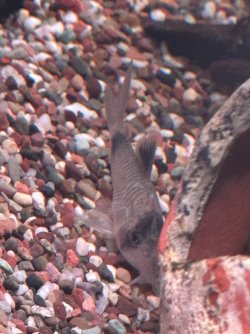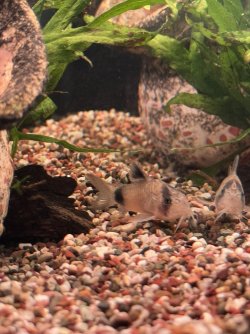It's not fungus.
It could be the start of velvet, white spot or another external protozoan parasite like Costia, Chilodonella or Trichodina. These last 3 protozoa cause the fish to rub on objects, develop cream, white or grey patches on their body, and in extreme cases, the skin bleeds around the edge of the cream, white or grey patches.
White spot appears as small white dots that resemble grains of salt, sprinkled over the body and fins.
Velvet appears as a yellow/ gold sheen over the body.
External protozoan infections on fish can be treated with copper or Malachite Green. Salt can be used to treat Costia, Chilodonella and Trichodina but does not treat white spot or velvet. White spot and velvet can also be treated with heat (30C/ 86F) for 2 weeks. Heat doesn't affect the other protozoan infections.
At this stage I would wait a few days and see if any white dots appear on the fish's body or fins. If it does then jack the temperature up to 30C and keep it there for a week after all the white dots have gone.
If no white spots appear and the fish continue to rub on objects, add some salt, (see directions below).
---------------------
SALT
You can add rock salt (often sold as aquarium salt), swimming pool salt, or any non iodised salt (sodium chloride) to the aquarium at the dose rate of 1 heaped tablespoon per 20 litres (5 gallons) of water. If there is no improvement after 48 hours you can double that dose rate so there is 2 heaped tablespoons of salt per 20 litres.
Keep the salt level like this for 2 weeks.
The salt will not affect the beneficial filter bacteria, fish, plants, shrimp or snails.
After you use salt and the fish have recovered, you do a 10% water change each day for a week using only fresh water that has been dechlorinated. Then do a 20% water change each day for a week. Then you can do bigger water changes after that. This dilutes the salt out of the tank slowly so it doesn't harm the fish.
If you do water changes while using salt, you need to treat the new water with salt before adding it to the tank. This will keep the salt level stable in the tank and minimise stress on the fish.
When you first add salt, add the salt to a small bucket of tank water (about 2 litres/ 1/2 gallon) and dissolve the salt. Then slowly pour the salt water into the tank near the filter outlet. Add the salt over a couple of minutes.




